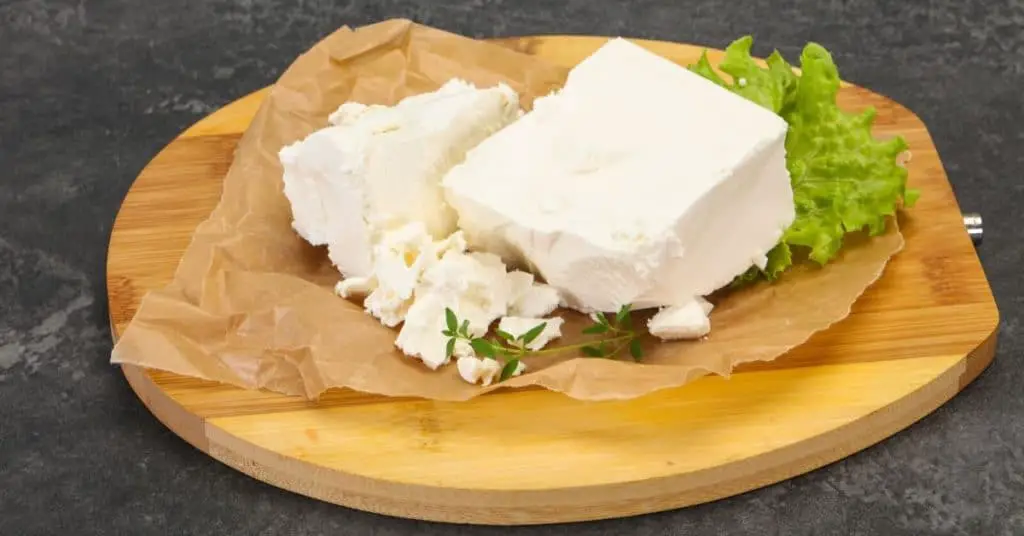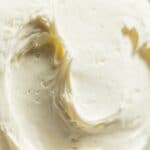In a nutshell: Yes, you can freeze goat cheese of different types as long as it is in good condition and properly wrapped, allowing it to retain its flavor and texture; while harder, crumbly goat cheese freezes better, all varieties can be frozen if stored and thawed following proper guidelines.
Goat cheese is a fresh, creamy cheese with a salty, tangy flavor. Also called chevre cheese, it comes in different shapes and sizes with varying textures.
Although it is ideal for those with a mild lactose sensitivity, goat cheese has become a popular all-round choice. It can be served as a cheese ball, as part of a cheese board with wine, as a pizza topping, in ravioli, sauces, tarts, salads and plenty other recipes.
Somewhat of a delicacy, goat cheese is not something you would want to see go to waste.
If you have more goat cheese in the fridge than what you can momentarily find a use for, you can place it in the freezer to extend its shelf life for a few more months—the perfect solution to save money and prevent food waste.
Here is a guide to freezing goat cheese properly to ensure the quality, flavor, and texture remain as good as fresh.
Can Goat Cheese Be Frozen?
Yes, you can freeze goats cheese of all different types for long term use. As long as it is in a good condition and well-wrapped, goat cheese will largely retain its delicious flavor and texture on freezing and thawing.
The moisture content of the cheese can affect its quality during the freezing process. Hard, slightly crumbly cheese will freeze better than soft cheeses. However, if treated properly for storage in the freezer and thawed carefully according to safety guidelines, all goat cheese varieties can be frozen without spoiling.
The way you go about freezing goat cheese may depend on whether it is a spreadable or firm variety. Once in the freezer, be sure to keep it at consistent freezing temperatures as thawing and refreezing will spoil the cheese.
How To Freeze Spreadable Goat Cheese
Step 1: Wrap
If you are freezing cheese leftovers in the original container that has already been opened, remove the lid. Optionally, you can cover the top of the cheese with a thin layer of olive oil. This prevents direct contact with air. Wrap the container without the lid in cling film to seal it well.
Then place the lid back on and wrap again. Your aim is to protect the leftover cheese from contact with air which will cause freezer burn and bacterial contamination.
If the container of spreadable cheese is sealed and unopened, wrap the entire container in a layer of cling film or place it in a sealable freezer bag.
Step 2: Label and Freeze
Label the container with the date to keep track of how long it has been in the freezer. Place the container upright in the freezer.
How To Freeze Firm Goat Cheese
Step 1: Portion
For the best results, cut the solid goat cheese into portion sizes that will be suitable for defrosting in the quantities you will need.
Step 2: Cling Wrap
Wrap the portioned goat cheese blocks in a double layer of plastic wrap. Make sure that no gaps are left open that will expose any part of the cheese to contact with air as this will cause freezer burn.
Step 3: Pack
Place the wrapped portions into a ziplock freezer bag. Press any excess air out of the bag before sealing.
Step 4: Label and Freeze
Label the freezer bags with the date the cheese is placed in the freezer.
How To Thaw Frozen Goat Cheese
Even if frozen properly, goat cheese can spoil easily if not thawed correctly. Goat cheese will spoil if brought to room temperature too quickly or if overheated. Here is how to correctly defrost goat cheese for serving or cooking:
Step 1: Refrigerate
Place the wrapped goat cheese block in the refrigerator overnight to thaw.
Step 2: Remove Wrapping
If you are thawing soft goat cheese, remove the layers of wrapping once defrosted and give it a good stir to reconstitute the creamy texture which may have separated slightly. Always keep it stored in the refrigerator with the lid on.
For firm goat cheese, remove it from the refrigerator one hour before serving to slowly reach room temperature for maximum flavor. When using the cheese in cooking, heat just until melted as overheating the goat cheese will change its consistency.
Types of Goat Cheese
As with cow’s milk cheese, goat cheese comes in a variety of textures and can be classified as hard, firm, semi-soft, or soft cheese. The type of classification varies according to the moisture content of the product.
Fresh goat cheese is white in color and should look moist. Spreadable goat cheese is often flavored with olive oil, is very soft, and can be purchased in plastic or glass containers.
Firm cheese logs are riper, drier, and slightly crumbly. The firmer texture makes it ideal for salads, cooked dishes, and appetizers.
FAQs
Conclusion
There is no shortage of goat cheese recipes for both sweet and savory dishes. It can be used in so many ways, from goat cheese spread on crackers, to tarts, pasta fillings, topping pizza, baked potatoes, salads, or even combining it in a dessert.
It is a great product to have on hand as even lactose-intolerant individuals can enjoy this creamy tangy delight.
This healthy delicious cheese can be frozen to extend its shelf life and retains its texture and flavor on thawing if following the recommended guidelines.
Whether you want to buy goat cheese in bulk on a sale or have leftover goat cheese in the fridge, freeze it for later use. You’ll be glad you kept this creamy companion around.
Up Next: How To Freeze Cottage Cheese
You might also like: How to Freeze Cream Cheese

Image by depositphotos/AndreySt









